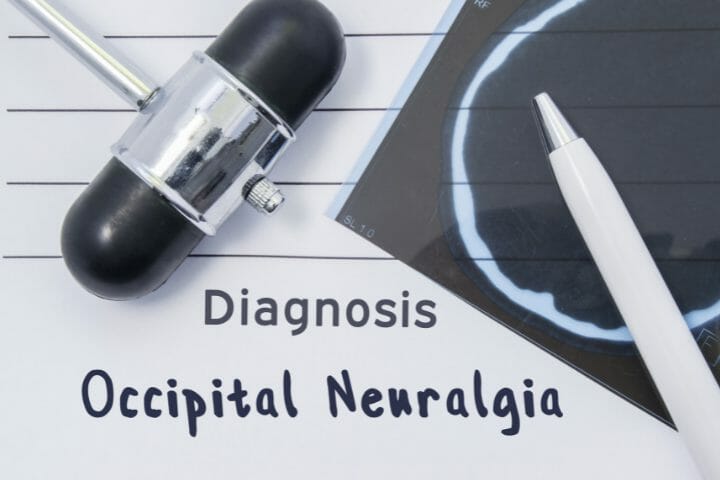A neuralgia can be a very painful disease for a person, affecting their ability to work. But can you get disability for occipital neuralgia? We discuss about the SSA’s criteria for awarding disability, how you can apply, and how you can get benefits if you are a veteran.
Contents
As per an estimate, occipital neuralgia affects at least 3 out of every 100,000 people every year. Even though it is a rare health condition, occipital neuralgia still makes it difficult for a person to live their life comfortably.
So, can you get a disability for occipital neuralgia? There is no clear answer to the question. There is no mention of neuralgia in the SSA’s disability evaluation system, but there are ways to get the benefits, and we shall discuss the same in this article.

What Are the Different Types of Neuralgias?
Neuralgia is a type of pain that occurs due to a damaged or irritated nerve, thus impacting pain receptors in the body. It is generally a shooting or stabbing pain that can occur anywhere in the body, including the face. Neuralgia is not necessarily a sign of a disease, although it is recommended to consult a physician if the pain is recurring.
Some common types of neuralgias include

Occipital Neuralgia
This type of neuralgia affects occipital nerves that send a signal between the neck and back of the head. The occipital nerves start at the top of your spine. That is why this disorder creates headaches that flow from the base of the skull, radiating to your ears and then to the top of the head. Occipital neuralgia can occur due to several reasons, the most common ones being:
- Diabetes
- Tensed neck muscles
- Tumors in the neck
- Infections
- Gout
- Neck injuries
- Head injuries
There are also some instances of this type of neuralgia where the cause was unknown. Occipital neuralgia is often difficult to diagnose because it is very similar to other headache disorders including primary headaches, cluster headaches, tension type headaches and migraine headaches.
You might also like to read: Can You Get Disability For POTS?
Trigeminal Neuralgia
The most common neuralgias involve the trigeminal nerve, which is present in the head and sends signals from the brain to the face. Trigeminal neuralgia affects the face, mouth, teeth, and nose creating headaches, shooting pains in the face and sometimes even facial spasms.
Even though the exact cause of this type of neuralgia is unknown, it generally occurs due to multiple sclerosis, inflammation that damages the myelin sheath, and tumors. It can also happen post-surgery or stroke if the nerve gets damaged.
When the trigeminal nerve gets damaged, it can cause excruciating pain while eating, talking, or touching something.

Postherpetic Neuralgia
This type of neuralgia affects the nerve in the skin, causing rashes (shingles) that are pretty painful. The affected area in the skin becomes highly sensitive to touch and changing temperature.
However, the developed rash often goes away after a few days, and so does the pain. In the case of severe nerve damage, the chances of pain going away are low, even when the rash has healed.
Peripheral Neuralgia
In this type of neuralgia, the nerve fibers outside the brain and spinal cord are the peripheral nervous system. In this case, one may feel numbness or severe pain in the hand, feet, arms, and legs.
One can also have difficulty speaking, eating, or swallowing due to this neuralgia. Some other symptoms include loss of coordination, excess sweating, bowel problems, involuntary muscle twitching or cramping, etc.
You might also like to read: Can You Get Disability For Neuropathy?
Can You Get a Disability Benefits for Occipital Neuralgia?
The point that makes it difficult for people suffering from any neuralgia to get benefits is that there is no clear way to diagnose it. So, most people who suffer from occipital neuralgia have to either follow the listings of the Blue Book or find a way through vocational medical allowance.

Applying for Social Security Disability with Neuralgia
There are two ways to use it based on the Blue Book or via Medical-Vocational Allowance (MVA). We have discussed both of them below in detail.
Basis The “Blue Book”
There is no specific schedule or listing for occipital neuralgia in the Blue Book of the Social Security Administration (SSA). It is a manual that determines the provisions to decide the disability benefit.
Thus, if your listing is only based on a neuralgia condition, it can be tricky to get the benefits. However, neuralgia can result from various other diseases or conditions listed in the book, such as diabetes, arthritis, migraines, etc.
You can match your condition with other conditions listed in the book and include similar symptoms and causes in your social security application. In this way, you can make a substantial case of impairments that are as severe as those listed in the ‘matching’ condition of the recorded subject.
Section 11.4 of the SSA’s Blue Book has listed neuropathy on the listing and is an excellent place to start with your application.
So, the first step is to consult the Blue Book to look for impairments similar to your symptoms and then go ahead and prepare the application. Further, you will have to learn about the medical records and other documents needed for applying with social security.

Basis Medical-Vocational Allowance
The crux of applying for MVA is to highlight that your condition is so severe that you cannot work anymore in your previous field of employment. You can do so by presenting medical records and documents that build the case in your favor.
To submit your application based on vocational allowance, you should include the following records:
- Documents that show your entire medical history and details of any physical examination
- The tests results
- Pain medications, therapies, and any other form of medication
- Findings of your doctors related to your condition and how it is preventing you from working
Once you gather the above medical records, you can apply for the benefits.
You might also like to read: Can You Get Disability For Congestive Heart Failure?
What Evidence Do You Need to Prove Your Neuralgia Is A Disability?
It is mandatory to provide medical records, tests, diagnoses, medication documents, etc., to prove that you are suffering from neuralgia. Some examples of evidence may include –
- X-rays, MRIs, lab results, or any other scans related to the problem
- Records of your medical history
- Pain Medication and physical therapy treatments that affect your ability to control pain
However, to understand the severity of your condition, you will have to go a step further.
SSA wants to determine your pain level, how regularly you suffer from it, how it affects your day-to-day functioning, and more. Thus, you would need to give the following evidence to prove your neuralgia is a disability –
- Take written or recorded statements from your family members and friends about your condition and how it affects your regular life.
- Maintain a regular diary where you jot down day-to-day difficulties that you go through to work, but fail.
- Get a hand-written statement from a medical professional that says that your condition is so severe that it prevents you from working a job you previously were perfectly capable of doing, including details of failed treatments, if any.

VA Benefits for Occipital Neuralgia
Medical records are the most important documents or evidence needed to claim VA benefits for occipital neuralgia. Two criteria should meet for the person to process their claim successfully-
- The person suffered from the condition during the employment
- The state has limited or prevented the person from working his job any longer
Migraine headaches and occipital neuralgia share similar symptoms. Since the former is listed in the SSA’s Blue Book, VA benefits are rated based on this schedule or listing.
Usually, 50% is the highest rating for this listing which equals ‘severe economic inadaptability.’ Even though the maximum rating for this schedule is 50%, one can still seek benefits based on total disability if they prove the two points above to get the claim successfully.
Can You Get a Disability for Trigeminal Neuralgia?
Trigeminal neuralgia is not listed as a disability in the Blue Book listing, but you can ‘match’ the symptoms with other listed conditions. In case your symptoms do not get your symptoms matched with any other listing, you can opt for the vocational medical allowance.
Under VMA, you will have to show medical records, work history, age, etc., to convince the SSA that your condition prevents or limits your abilities to perform at your job.
Your physician provides SSA with a residual functioning capacity (RFC) form that explains what you can and cannot do. It includes the physical, mental, and emotional power of a person that indicates how it affects your ability to work.
If your disability examiner finds your condition severe enough to get the benefits, your claim will be approved, and you will get monthly benefits for trigeminal neuralgia disability. So, the answer to can you get disability for trigeminal neuralgia is “maybe”.
You might also like to read: If You Have Seizures Can You Get Disability?
How does the Social Security Administration (SSA) qualify trigeminal neuralgia as a disability?
In its Blue Book, the SSA doesn’t qualify trigeminal neuralgia as a disability. However, it does consider the application of someone who has similar symptoms to that of a disease or condition mentioned in the listing of the Blue Book. Usually, it’s diabetes, arthritis, or migraine since they share common symptoms with trigeminal neuralgia.
If the symptoms do not match, it allows the person to show medical records, work history, RFC vie vocational medical allowance. If the examiner finds the case to be severe and is convinced that the concerned person cannot work in the previous employment due to limitations put forth by trigeminal neuralgia, he approves the application.
Thus, the person is declared to be disabled and is rewarded with monthly benefits.

Frequently Asked Questions
How severe is occipital neuralgia?
Occipital neuralgia is not a life-threatening condition. Usually, the proper medication and healthy lifestyle choices reduce the pain and numbness. However, if the problem continues, it is recommended to consult a specialist.
Can you work with neuralgia?
Yes, most people can work with neuralgia. However, it depends on the person’s pain level and other individual problems that should decide whether they can work with neuralgia.
What famous person has trigeminal neuralgia?
Few notable people with trigeminal neuralgia include British Prime Minister William Gladstone, author Gloria Steinem, and entrepreneur Melissa Seymour.
A Few Final Words
You should apply for SSA benefits for occipital neuralgia the minute you understand that this condition is affecting you. It usually takes at least three to six months for the formalities to occur, and it can also take about a year for the complete process to occur.
We have tried to cover all details regarding how to apply, what listings to use and the process. We hope this guide will be able to help you. Thank you for reading, and do write to us in case you need more help.
